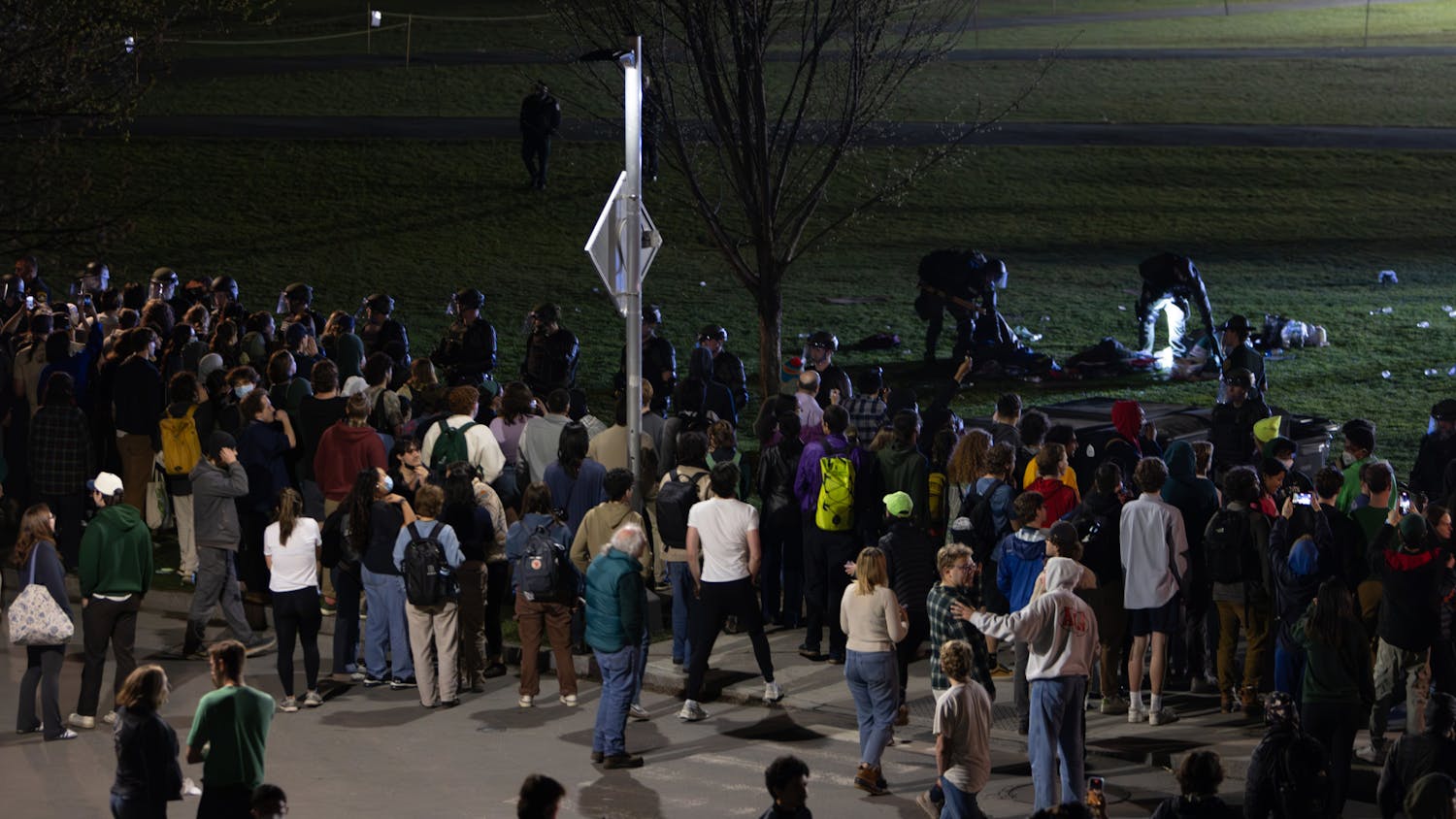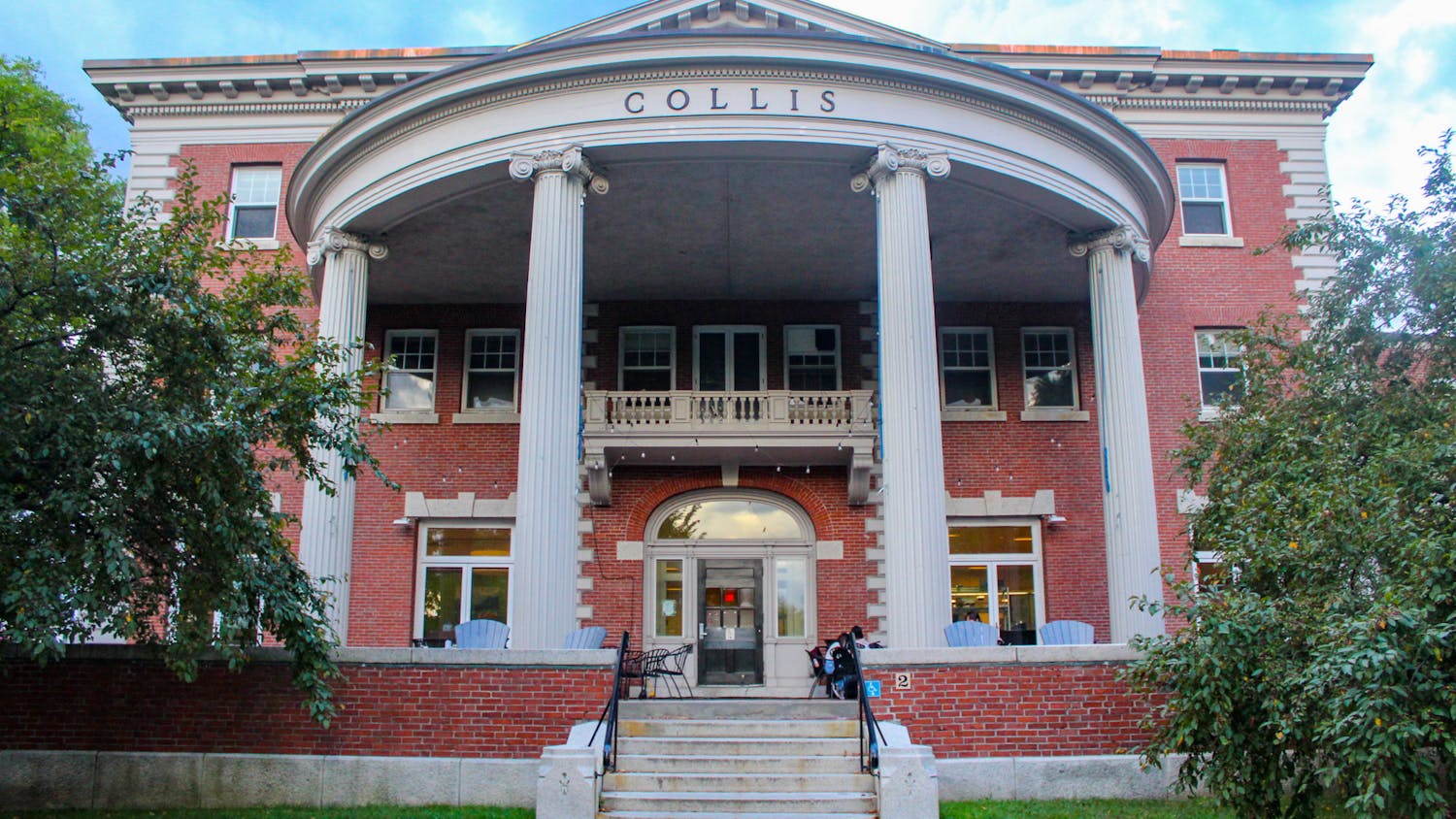While some pieces are replicas of historical calligraphy transcribed by Asian studies professor Wen Xing, others are originals by famous Chinese calligraphy masters.
"In particular with this exhibit, we had a lot of individual materials done by Chinese calligraphers that wouldn't be here if it weren't for this exhibit," said Dennis Grady, Baker-Berry graphic art specialist, who helped to organize the display. "It was a rare opportunity to show things that people just wouldn't have an opportunity to see."
The exhibit contains the work of one of the most well-known living calligraphers, Qin Yonglong, who worked with Chinese professor Hua-Yuan Li Mowry for decades, Wen said.
"This is her collection, this calligrapher gave this piece to her and he also requested one copy from Qi Gong for Professor Mowry," Wen said.
Qi Gong, who passed away in 2005, was the chair of the Chinese Calligraphers Association, a professor at Beijing Normal University and arguably the most famous contemporary Chinese calligrapher.
Despite the exhibit's scale, it was not assembled by calligraphy specialists, but rather as part of one of Xing's seminars. Four years ago, Xing designed a class focused on the study of Chinese calligraphy. Today, the course has grown to become an extremely popular option in the AMELL department.
"Last spring, I had 51 students on the waiting list," Xing said. "This term I offered two calligraphy classes, and I still had 17 students on my waiting list."
To ensure that students who wanted to take a course in calligraphy were able to, Xing created a higher-level option, Advanced Chinese Calligraphy and the Manuscript Art, which debuted this fall.
Unfortunately, the students in Xing's courses usually only see the pieces exclusively on slides or in textbooks.
"It is very hard to see the fresh, original works of calligraphy in the United States, so that's why I thought of this idea to organize this exhibition," Xing said.
Xing said he wanted his students to have the opportunity to see calligraphy created by masters outside of photocopies in textbooks. Xing submitted an application for the exhibit to the Year of the Arts steering committee and it was quickly approved.
The exhibit contains transcriptions of texts dating to the 4th century B.C. and includes the third volume of texts on the warring states period of China's past.
"This is the first chance in thousands of years for scholars to see original texts," Xing said.
The book is so rare that Xing organized a conference in August for scholars from around the world to view and discuss the materials, he said. Over 70 academics from more than 13 countries participated.
The display cases include other famous works, such as copies of passages from the Book of Changes, one of the oldest classic Chinese texts that dates to the 3rd century B.C., transcriptions from the Buddhist Heart Sutra and poems by modern Chinese calligraphers.
The work of Huang Dun, a recent winner of the Chinese Calligraphy Orchid Pavilion Award, China's most esteemed national prize, hangs in the exhibit.
"It's very difficult to see their work, even in China," Xing said.
Also featured in the collection is a poem written by Yau Shun-chiu, a Parisian-based professor, that Yau transcribed for the specific exhibit. The poem, accompanied by an English translation, is about the snake, this year's zodiac sign.
"Visually [the exhibition] is very beautiful, there's a really nice connection with Wen Xing's work," library education and outreach programs director Laura Barrett said. "Additionally, we have really nice materials in the library collection that relate to Chinese calligraphy."
The balance between Xing's organization and commitment to this field and the library's resources have contributed to the exhibit's warm reception across campus.
Following this term's calligraphy exhibit, Baker Library will display a collection of books picked by the College's librarians, followed by an exhibition on World War I.




